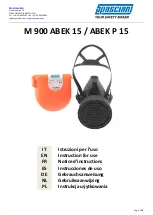
SCPI Introduction
Copyright © Itech Electronic Co., Ltd.
3
Case Sensitivity
Common commands and SCPI commands are not case sensitive. You
can use upper or lower
,
for example:
*RST = *rst
:DATA? = :data?
:SYSTem:PRESet = :system:preset
Long-Form and Short-Form Versions
A SCPI command word can be sent in its long-form or short-form version.
However, the short-form version is indicated by upper case characters.
Examples:
:SYSTem:PRESet
long-form
:SYST:PRES
short form
:SYSTem:PRES
long-form and short-form combination
Note that each command word must be in long-form or short-form, and
not something in between.
For example,
:SYSTe:PRESe
is illegal and will generate an error. The
command will not be executed.
Query
Observe the following precautions with queries:
⚫
Set up the proper number of variables for the returned data. For example, if
you are reading back a measurement array, you must dimension the array
according to the number of measurements that you have placed in the
measurement buffer.
⚫
Read back all the results of a query before sending another command to
the instrument. Otherwise a Query Interrupted error will occur and the
unreturned data will be lost.
1.3 Message Type of SCPI
There are two types of SCPI messages, program and response.
⚫
Program message: A program message consists of one or more properly
formatted SCPI commands sent from the controller to the instrument. The
message, which may be sent at any time, requests the instrument to
perform some action.
⚫
Response message: A response message consists of data in a specific
SCPI format sent from the instrument to the controller. The instrument
sends the message only when commanded by a program message called
a "query."
The next figure illustrates SCPI message structure:
















































